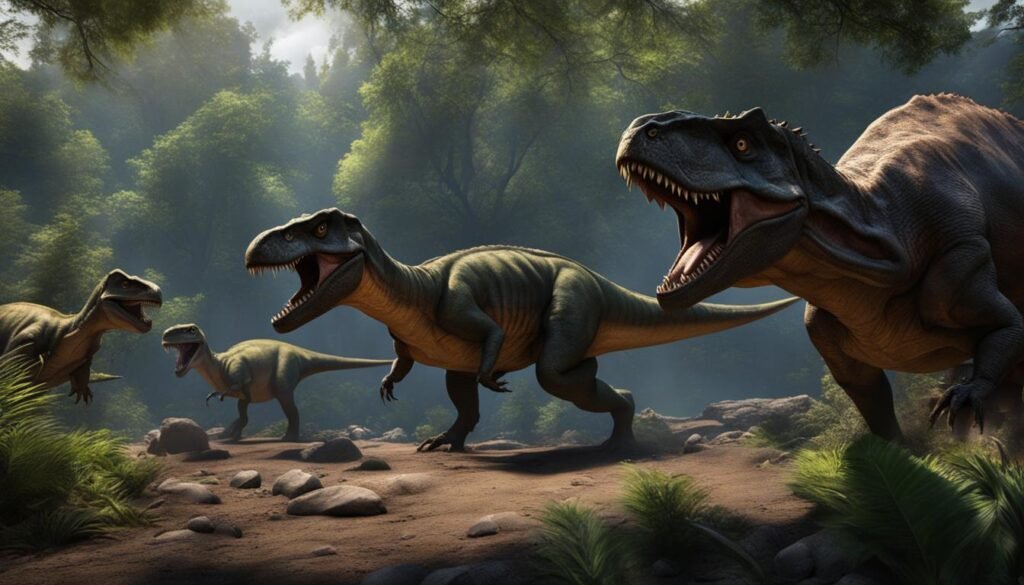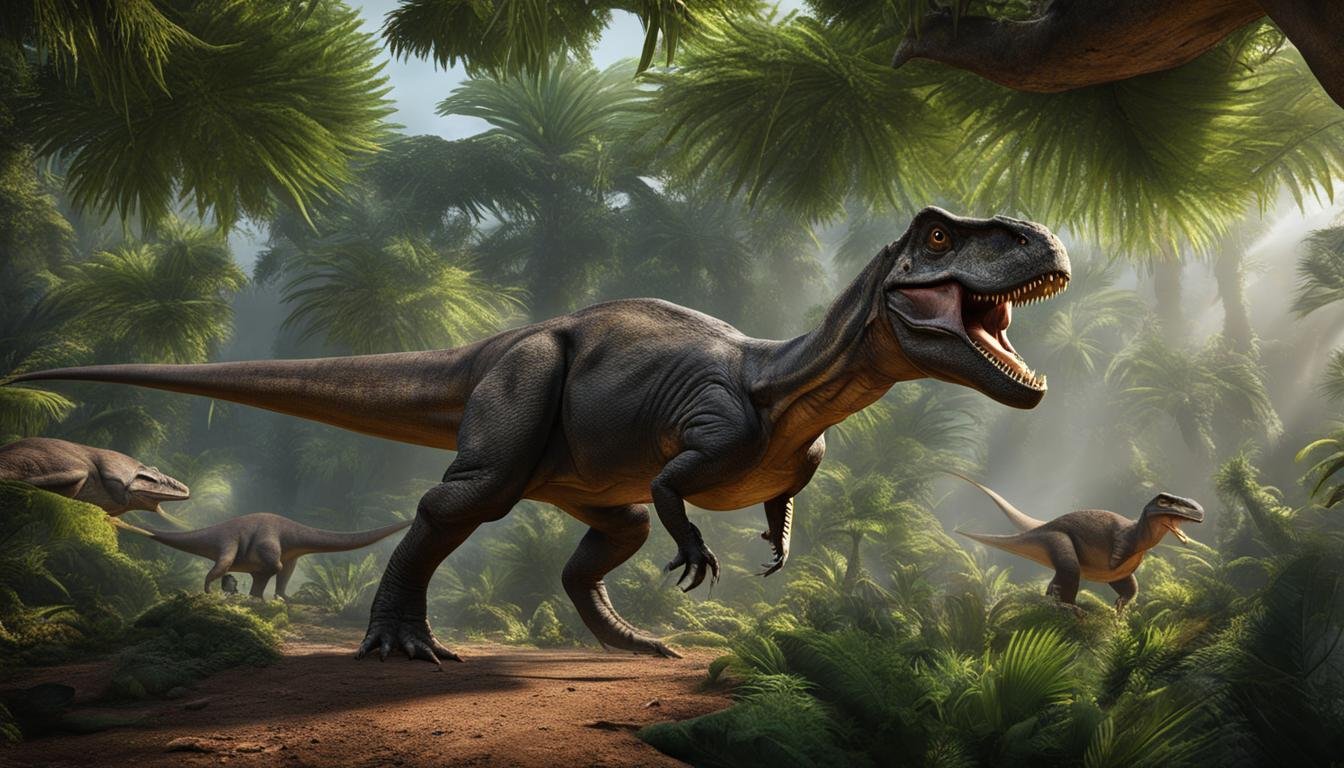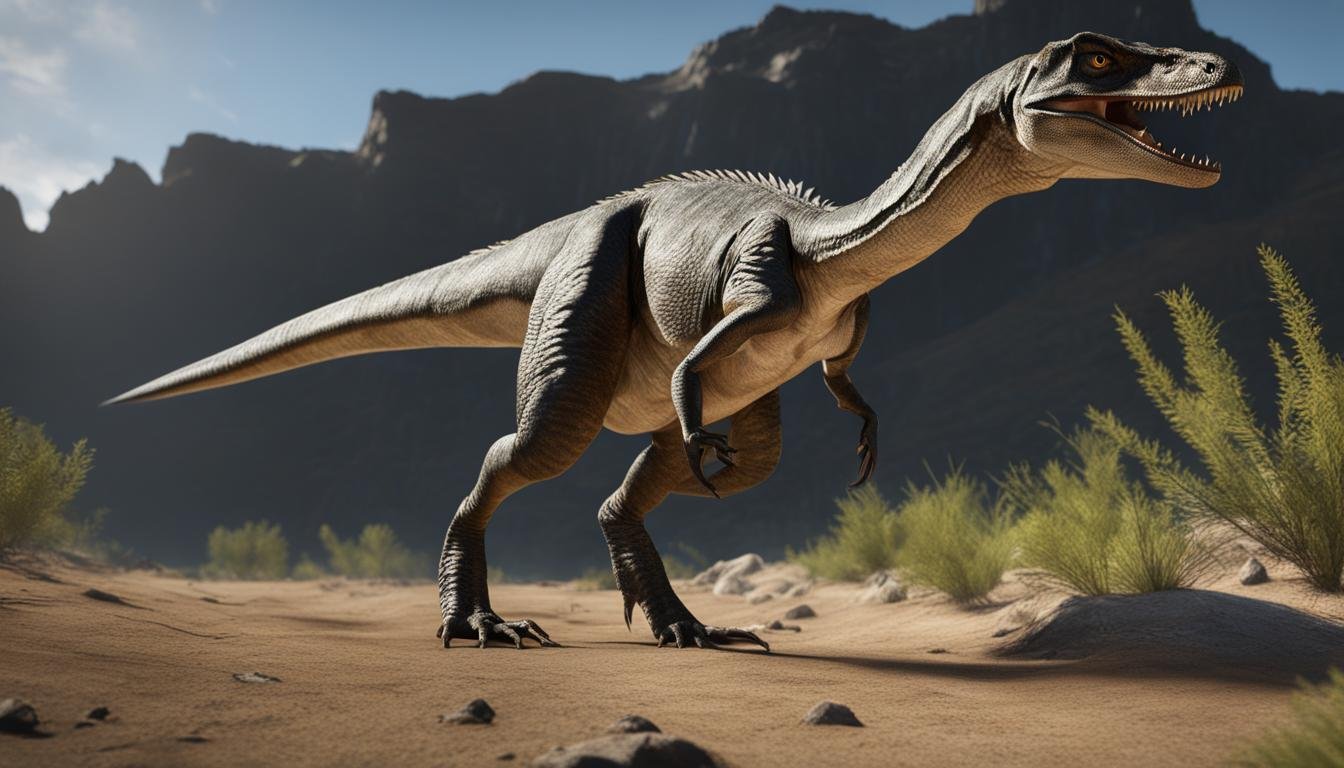When we think of dinosaurs, we often imagine them roaring and making thunderous sounds. However, recent research suggests that the reality may have been quite different. Dinosaurs had their own unique ways of vocalization and sound production that were far from what we see in popular movies like Jurassic Park.
Scientists have been uncovering fascinating insights into the true nature of dinosaur vocalizations through the study of fossil evidence and paleobiology. Contrary to the roaring sounds portrayed in media, it is believed that dinosaurs may have produced closed-mouth vocalizations, similar to low-pitched swooshing or growling sounds.
| Key Takeaway | Detail |
|---|---|
| Realistic Vocalizations | Dinosaur vocalizations were likely different from the roaring sounds commonly depicted in movies. |
| Closed-Mouth Vocalizations | Fossil evidence suggests that dinosaurs may have used closed-mouth vocalizations. |
| Myth of Velociraptor Resonating Chamber | The portrayal of a “Velociraptor resonating chamber” in movies has been debunked as inaccurate. |
| Ongoing Research | Research into understanding the true sounds of dinosaurs is ongoing and continually evolving. |
Fossil Evidence of Dinosaur Vocalizations
Research in the field of paleobiology has provided fascinating insights into the vocal capabilities of dinosaurs. Paleontologists have analyzed fossil records to uncover evidence of dinosaur vocalizations, shedding light on the sounds these ancient creatures may have made. One significant discovery was the fossil of an ancient bird called Vegavis iaai, which had a vocal organ known as a syrinx, responsible for bird songs and calls. This finding suggests that some dinosaur ancestors may have possessed a similar vocal structure. However, no syrinxes have been found in earlier dinosaur fossils, making the study of dinosaur vocalizations challenging.
Another avenue of research has focused on the larynx, a valve that regulates airflow, as a potential mechanism for dinosaur vocalizations. Fossilized larynxes have been discovered in certain dinosaur species, providing valuable clues about their vocal capabilities. These findings suggest that the larynx played an essential role in producing sounds in dinosaurs, similar to vocalizations in modern animals. However, the exact nature of dinosaur vocalizations and the range of sounds they produced remain uncertain.
While fossil evidence of dinosaur vocalizations is limited, ongoing research continues to provide new insights. Paleontologists are diligently analyzing paleontological records, studying the anatomy of dinosaur fossils, and conducting comparative studies with modern-day animals to gain a deeper understanding of dinosaur vocalizations. By piecing together the available evidence and using advanced techniques, scientists hope to uncover more about the sounds that filled the prehistoric world.
| Fossil Evidence of Dinosaur Vocalizations | Paleobiology Studies | Fossilized Larynx | Paleontological Records |
|---|---|---|---|
| Analysis of fossil records | Examining the field of paleobiology | Discovery of fossilized larynxes | Uncovering evidence from paleontological records |
| Vegavis iaai fossil with a syrinx | Insights from the study of ancient bird vocalizations | Role of the larynx in producing sounds | Valuable clues provided by fossilized larynxes |
| Ongoing research and analysis | Continued study in the field of paleobiology | Uncertain nature of dinosaur vocalizations | Uncovering more about dinosaur sounds |
Theories on Dinosaur Vocalizations
Scientists have developed various theories on how dinosaurs used vocalizations as a means of communication. These theories are based on the understanding that different types of vocalizations serve different purposes. One theory suggests that dinosaurs used acoustic signals to communicate with one another. These signals may have included territorial calls, which helped establish and defend territories, as well as mating songs, which played a role in attracting potential mates.
Another theory proposes that dinosaurs utilized predator warning sounds to alert others of potential dangers. This would have been especially important for prey species, as it allowed them to warn their herdmates of approaching predators. The ability to produce species-specific vocalizations is also believed to have been essential for dinosaurs, enabling them to identify members of their own species and communicate effectively within their social groups.
The exact sounds of dinosaur vocalizations remain a mystery, as fossil evidence provides limited information on the specific nature of these sounds. However, ongoing research in paleobiology and paleontological studies continues to shed light on this subject. By analyzing anatomical features and vocal apparatuses of dinosaur fossils, scientists hope to gain a better understanding of how sound was produced and how different species may have utilized vocalizations in various ways.
“Through the study of dinosaur vocalizations, we can gain valuable insights into their behavior, social structure, and ecosystem dynamics,” says Dr. Emma Johnson, a paleontologist specializing in dinosaur communication. “Understanding how dinosaurs communicated with one another helps us reconstruct their world and paints a more comprehensive picture of life in the ancient past.”
As research in this field progresses, scientists strive to decipher the acoustic signals and vocal capabilities of dinosaurs. By doing so, they aim to broaden our knowledge of prehistoric life and gain a deeper understanding of the diversity and complexity of communication methods employed by these fascinating creatures.
| Theory | Description |
|---|---|
| Acoustic Signals | The use of sound to communicate various messages, such as territorial claims, mating calls, and warning signals. |
| Call Variations | Belief that different dinosaur species had distinct vocalizations, allowing them to communicate effectively within their own species. |
| Territorial Calls | Vocalizations used to establish and defend territories, signaling ownership to other members of the same species. |
| Mating Songs | Distinct vocalizations produced during the mating season to attract potential mates and establish reproductive dominance. |
| Predator Warning Sounds | Vocal signals used to alert other dinosaurs of approaching predators, ensuring group safety and survival. |
| Species-Specific Vocalizations | Dinosaurs possessed unique vocalizations, allowing them to distinguish their own kind and communicate effectively within their social groups. |
Vocal Anatomy and Evolutionary Adaptations
Understanding the vocal anatomy of dinosaurs is key to unraveling the mysteries of their sound production. Researchers have hypothesized that various evolutionary adaptations enabled dinosaurs to produce unique vocalizations. One significant adaptation is the presence of resonating chambers in some dinosaur species.
Resonating chambers, such as the peculiar crests and projections on the heads of hadrosaurs, may have played a role in creating distinctive honking noises. These structures potentially acted as amplifiers or modifiers of sound, allowing dinosaurs to communicate over long distances or produce species-specific vocalizations.
Evolutionary adaptations may have allowed dinosaurs to produce unique vocalizations, but further research is needed to fully understand their vocal anatomy.
In addition to the study of vocal anatomy, scientists have also conducted vocal cord reconstruction studies to gain insights into how dinosaurs produced sounds. By analyzing the structure and mechanics of vocal cords in modern animals, researchers can make inferences about the vocal abilities of dinosaurs.

However, it is important to note that reconstructing the vocal cords of dinosaurs is challenging due to the lack of direct fossil evidence. The vocal cords themselves are soft tissues that are rarely preserved in the fossil record. Therefore, scientists rely on comparative anatomy and biomechanical modeling to make educated guesses about the vocal capabilities of dinosaurs.
Comparative Anatomy
In comparative anatomy, researchers compare the anatomy of living animals, particularly those closely related to dinosaurs, to infer the structure and function of dinosaur vocal organs. By examining the larynx and other related structures in birds and reptiles, scientists can draw parallels to dinosaur vocal anatomy.
Biomechanical Modeling
Biomechanical modeling involves creating computer simulations and models to simulate the vocal capabilities of dinosaurs. By inputting data on skeletal anatomy, muscle structure, and respiratory systems, researchers can simulate how different parameters affect vocalizations. This approach allows scientists to explore various hypothetical scenarios and assess their feasibility.
Continued research in vocal anatomy and evolutionary adaptations will help us gain a deeper understanding of how dinosaurs produced sounds and communicated with one another. By building upon the existing knowledge and using innovative techniques, scientists are making significant strides in reconstructing the vocal world of dinosaurs.
Current Findings and Ongoing Research
Recent studies in paleontology and behavioral science have provided fascinating insights into the vocal communication of dinosaurs. By analyzing paleontological records and conducting behavioral studies, researchers are gaining a better understanding of how dinosaurs used vocalizations to communicate with each other and their environment.
One key area of focus is the examination of fossilized remains and the interpretation of behavioral evidence. Paleontological records have revealed structures such as the larynx and resonating chambers in certain dinosaur species, offering clues about their vocal capabilities. These findings have allowed scientists to hypothesize about the range and nature of sounds that dinosaurs may have produced.

Behavioral studies play a crucial role in understanding how dinosaurs communicated through vocalizations. By observing the behaviors of modern-day animals, researchers can make informed speculations about the possible functions of dinosaur vocalizations. For example, certain vocalizations may have served as territorial calls to establish dominance or as mating songs to attract potential mates. Ongoing research in this area aims to uncover more information about the specific purposes and variations of dinosaur vocalizations.
Paleontological Records and Behavioral Studies
Paleontological records and behavioral studies go hand in hand when it comes to understanding dinosaur vocal communication. By combining the information gathered from fossils with insights from behavioral science, researchers can piece together a more comprehensive understanding of how dinosaurs used vocalizations in various contexts.
| Key Findings | Implications |
|---|---|
| Paleontological records reveal the presence of larynx and resonating chambers in certain dinosaur species. | This suggests that dinosaurs had the anatomical structures necessary for vocal production, allowing them to produce a range of sounds. |
| Behavioral studies indicate that vocalizations may have served functions such as territorial displays and mating rituals. | This provides insights into the social behavior and communication strategies of dinosaurs, enhancing our understanding of their lifestyles. |
| Ongoing research aims to uncover more details about the specific vocal capabilities and variations among dinosaur species. | This will help refine our knowledge of dinosaur vocalizations and provide further insights into their behaviors and ecosystems. |
As research in these fields continues, scientists hope to gain a more complete picture of the soundscape of the prehistoric world and the role vocal communication played in the lives of dinosaurs. By studying paleontological records, conducting behavioral studies, and analyzing the anatomical adaptations of dinosaurs, researchers are gradually unraveling the mysteries of dinosaur vocalizations and their importance in interspecies communication.
Conclusion
The popular depiction of roaring dinosaurs in movies like Jurassic Park may not be accurate. Recent research and fossil evidence suggest that dinosaur vocalizations were likely closed-mouth sounds, such as low-pitched swooshing or growling. Paleontologists have debunked the idea of a “Velociraptor resonating chamber,” and ongoing studies continue to uncover the true nature of dinosaur sounds.
Scientists theorize that dinosaurs used various communication methods, including acoustic signals, to vocalize. These vocalizations may have served different purposes, such as territorial calls, mating songs, or predator warning sounds. While the exact sounds of dinosaur vocalizations are still unknown, research suggests that they were distinct and species-specific, differing from the roaring sounds portrayed in popular media.
Dinosaur vocal anatomy played a crucial role in sound production. Some dinosaurs may have had special adaptations, such as resonating chambers, which could have been used to make unique noises. Vocal cord reconstruction studies have also provided insights into how dinosaurs produced sounds. However, more research is needed to fully understand the vocal capabilities and communication methods of these prehistoric giants.
In conclusion, while the image of roaring dinosaurs may be misleading, ongoing research is shedding light on the true nature of dinosaur vocalizations. Fossil evidence and scientific theories suggest that dinosaurs likely produced closed-mouth vocalizations, with variations in sound between species. By analyzing paleontological records and conducting behavioral studies, scientists are gaining valuable insights into the vocal communication and evolutionary adaptations of these ancient creatures.








